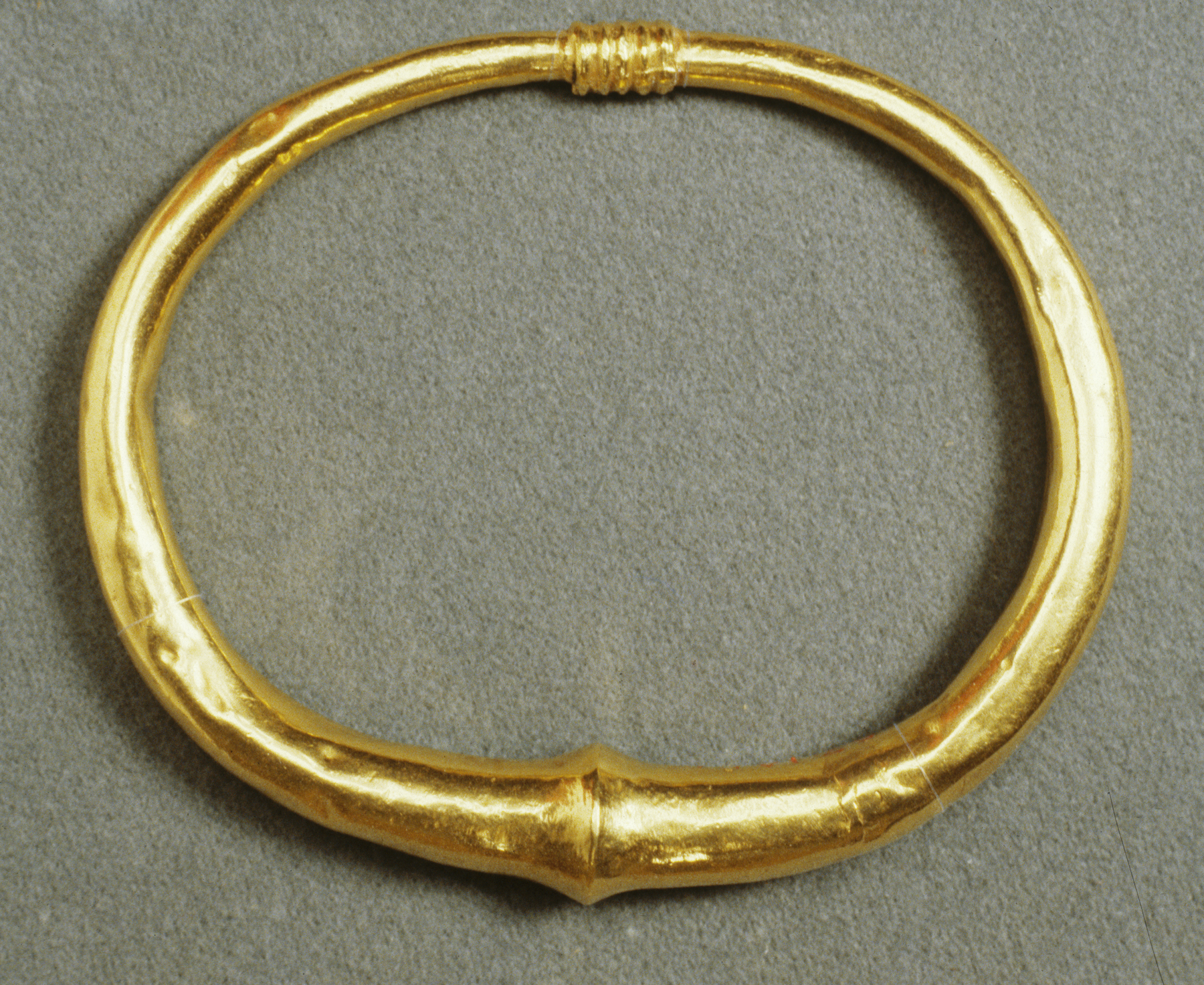Bracelet
This bracelet is made of tubular gold, with a simulated fastener of five ribs embossed on one side. It was bought ca. 1920 in Athens together with two others, now in Toronto, Royal Ontario Museum, inv. 951.166.1-2. Very similar Byzantine bracelets are also in Washington DC, Dumbarton Oaks Museum, inv. 58.42 and Saint Petersburg, State Hermitage Museum, inv. Omega 100-101.
Provenance
Provenance (from the French provenir, 'to come from/forth') is the chronology of the ownership, custody, or location of a historical object. Learn more about provenance at the Walters.
Sale, Athens; Margaret Burg, England and Scarsdale, New York, ca. 1920, by purchase; Walters Art Museum, 1951, by purchase.
Exhibitions
| 1984-1987 | Objects of Adornment: Five Thousand Years of Jewelry from the Walters Art Gallery, Baltimore. Cooper-Hewitt National Design Museum, New York; Chrysler Museum of Art, Norfolk; Carnegie Museum of Art, Pittsburgh; San Antonio Museum of Art, San Antonio; Philbrook Museum of Art, Tulsa; Honolulu Academy of Arts, Honolulu; New Orleans Museum of Art, New Orleans; Milwaukee Art Museum, Milwaukee; Minneapolis Institute of Art, Minneapolis; Toledo Museum of Art, Toledo; The John and Mable Ringling Museum of Art, Sarasota. |
| 1987 | Jewelry from the Walters Art Gallery and the Zucker Family Collection. The Walters Art Gallery, Baltimore. |
| 1979-1980 | Jewelry - Ancient to Modern. The Walters Art Gallery, Baltimore. |
Conservation
| Date | Description | Narrative |
|---|---|---|
| 5/12/1977 | Treatment | other |
| 5/22/1984 | Treatment | cleaned |
Geographies
Turkey, Istanbul (Constantinople)
(Place of Origin)
Greece (Place of Discovery)
Measurements
3 1/16 x 2 5/8 x 7/16 in. (7.7 x 6.6 x 1.1 cm)
Credit Line
Museum purchase, 1951
Location in Museum
Accession Number
In libraries, galleries, museums, and archives, an accession number is a unique identifier assigned to each object in the collection.
In libraries, galleries, museums, and archives, an accession number is a unique identifier assigned to each object in the collection.
57.1844


